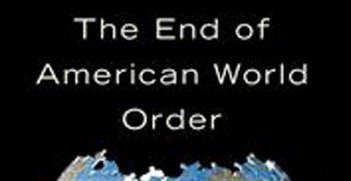India-Myanmar Relations: Changing Contours

The advertising for this publication promises “rare insights” into India-Myanmar relations and to a large extent this is what it delivers. Rajiv Bhatia is ideally placed to provide such insights; he is a former Indian ambassador to Myanmar from 2002-05 and is someone who has remained in touch with Myanmar in the intervening years, including as director of the New Delhi-based think tank, the Indian Council of World Affairs, which mounted a special delegation to Myanmar in 2012. This is certainly a valuable reference book; rarely will we see such a well-informed and articulate English-language account of India-Myanmar relations. This reviewer knew Bhatia when we were both ambassadors to Myanmar at the same time (2002-03).
Overall, Bhatia presents an unflinchingly optimistic account of recent developments in India-Myanmar relations, especially through part of the period of military rule and the subsequent Thein Sein government’s reformist period (2011-15). He provides detailed insider accounts of discussions between the Indian government and high-level Myanmar visitors, including National League for Democracy (NLD) leader Aung San Suu Kyi on her first return trip to India in 2012 after her release from house arrest in late 2010. He also offers a comprehensively documented record of official India-Myanmar interactions over the past two decades. Bhatia gives an unusual and interesting insight into some of the practical implications of India’s and Myanmar’s shared Buddhist links. His coverage stops before the 2015 Myanmar elections in which the NLD achieved a landslide victory.
Bhatia displays a tendency to take Indian statements of intent about what it will do with Myanmar too literally, when it is well known (even in Myanmar) that actions speak louder than words. It is not that he conceals any of the specific failures in India’s ongoing relations with Myanmar, such as the much-delayed commitments to infrastructure, road and mixed-mode Kaladan River transport construction projects; indeed he acknowledges them and identifies them as areas that India needs to rectify as soon as possible. But one does not sense much awareness of how such Indian failures might have been perceived in Myanmar. As someone who travelled on both these routes a few years ago, I can see how important completing such projects is for cash-strapped Myanmar.
One thing missing is the voice of Myanmar individuals with their own views on Myanmar-India relations. This is surprising given the presence of a sizeable and sometimes vocal Myanmar refugee community in New Delhi. For many years this included the respected expatriate-run Mizzima news agency, which relocated back to Myanmar in 2012 after being generously permitted by the Indian government to operate an overtly anti-military regime agenda. It is as if New Delhi is not receiving honest private opinions from anyone in Myanmar but is relying excessively on the unfailingly polite official communications from the latter. There can be little doubt about the disappointment Myanmar feels about how help promised by India is slow to arrive.
Naturally, Bhatia is well informed about the Indian strategic establishment’s views on Myanmar, which are specifically focused on cross-border armed insurgents infiltrating its sensitive north-eastern provinces as well as low-key pressures for an autonomous Nagaland. While these security concerns are real, they are generally, by any measure, small-scale and largely contained. They tend to be exaggerated on the Indian side, although India may be justified in feeling let down by Myanmar. It is not that these matters are not taken seriously by Myanmar. Whether they justify an unauthorised cross-border raid by Indian forces, as happened in mid-2015, is doubtful.
Also missing is the view of the Indian business community about Myanmar. Obviously India-Myanmar economic ties cannot develop much through cross-border trade alone, given that in both countries these are their poorest and most remote regions. But the record of successful Indian business engagement with Myanmar on a larger scale is not impressive. If the delays in completing promised infrastructure projects can be explained, Bhatia does not do so.
Overall, Indian policy towards Myanmar seems to be driven too much by India’s desire to compete strategically with China and by the goal of seeing Myanmar publicly as primarily part of a look east strategy. Bhatia continues this convention with a chapter on “India-China-Myanmar Triangle”, which describes these “changing contours” fairly factually. Less Indian attention is focused on what India can do for/with Myanmar. As a result, India is seriously under-performing in developing its economic relations with Myanmar. Bhatia agrees, and specifies what India still needs to do in his “Future Directions” chapter.
It will be interesting to see how India manages its relations with Myanmar under the NLD government. While Indian policy has sought to adjust to political changes emerging in Myanmar, it is debatable whether this amounts to the “completion of the reconciliation process” which the NLD claimed. Having shifted its support away from Aung San Suu Kyi in 1995, is it not clear how India will now manage its relations with her in charge.
Rajiv Bhatia (2016) India-Myanmar Relations: Changing contours. New Delhi and Singapore. Routledge and ISEAS (Institute of Southeast Asian Studies)
By Trevor Wilson, visiting fellow, Department of Political & Social Change, ANU.





